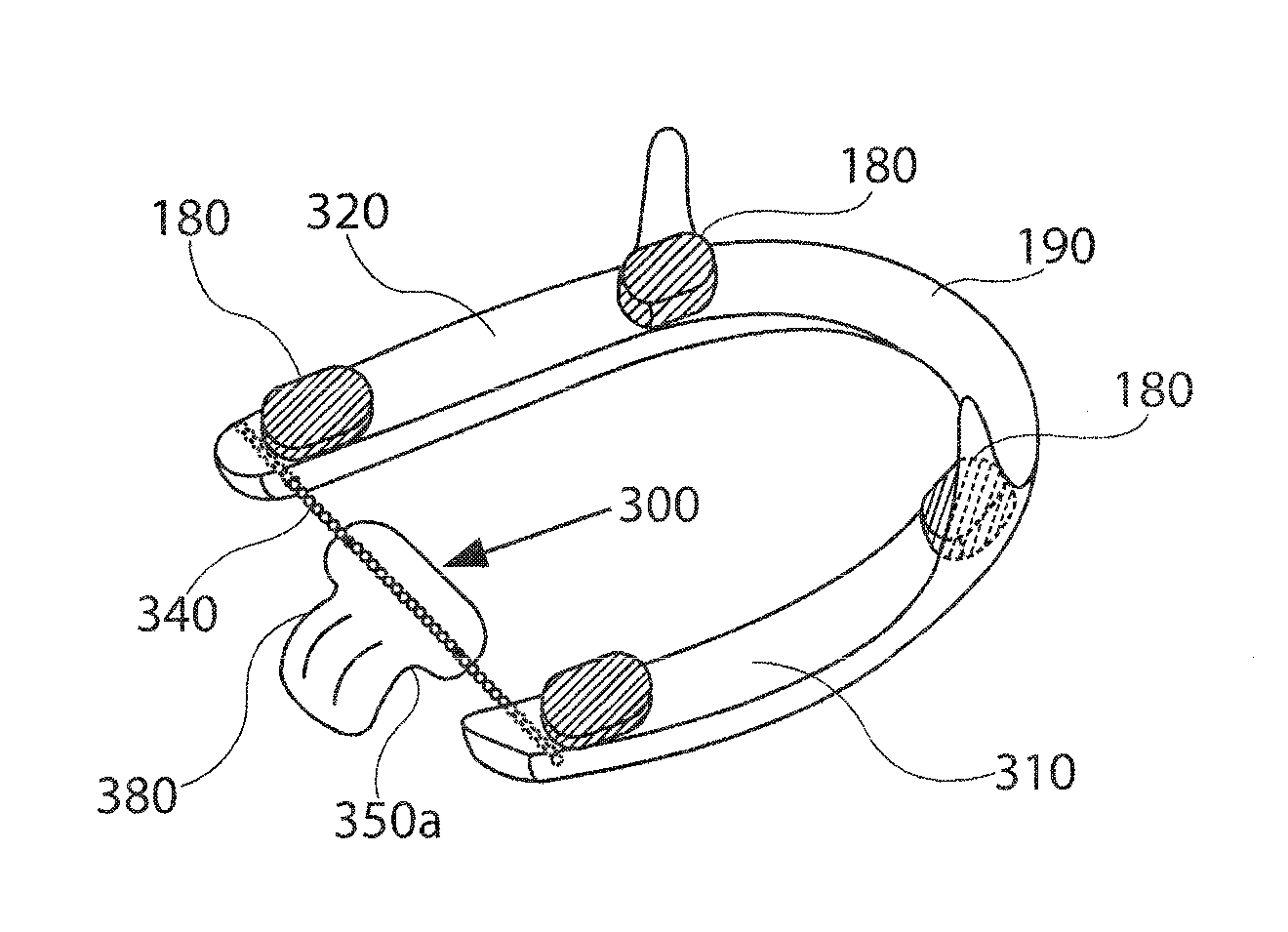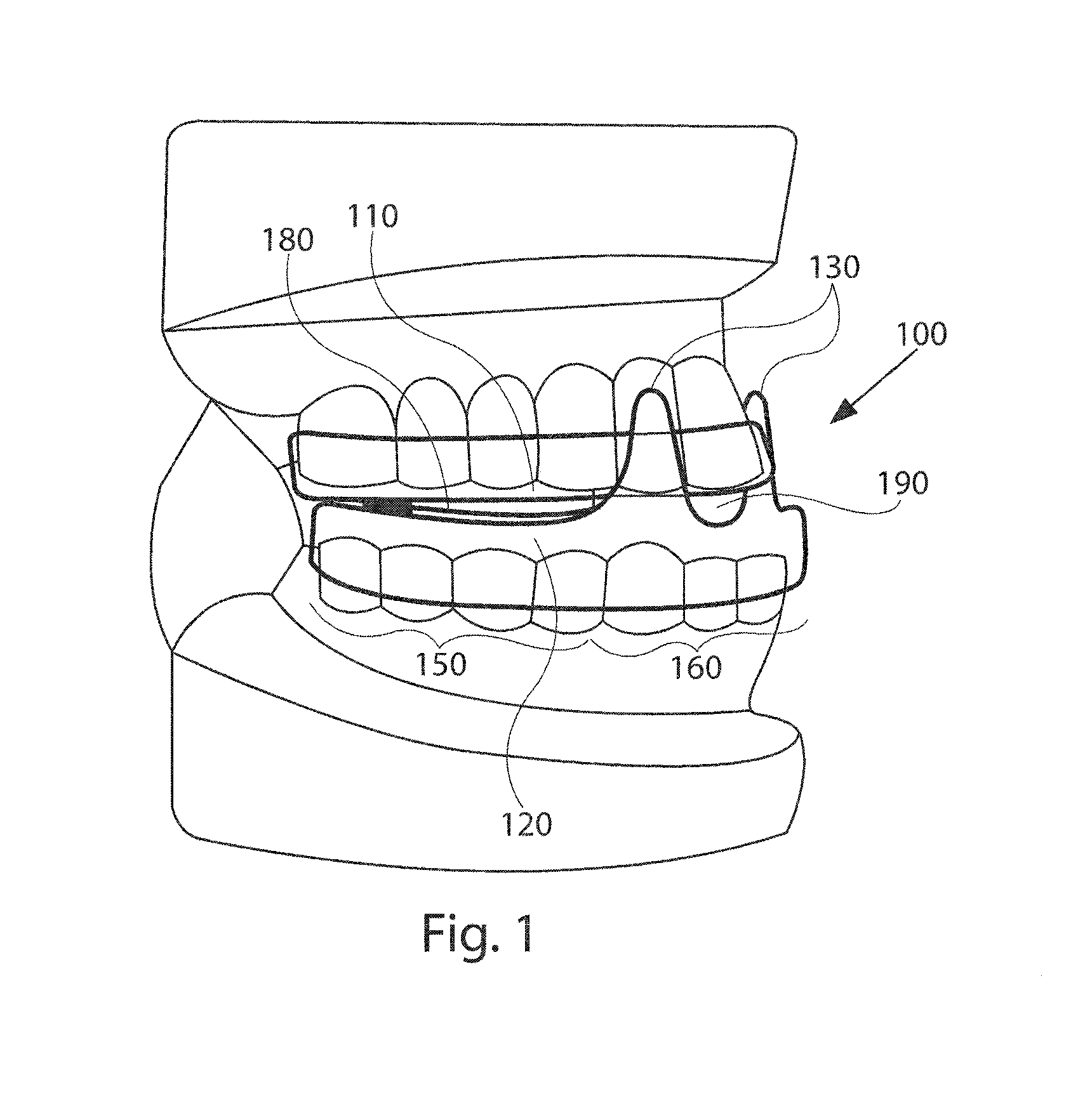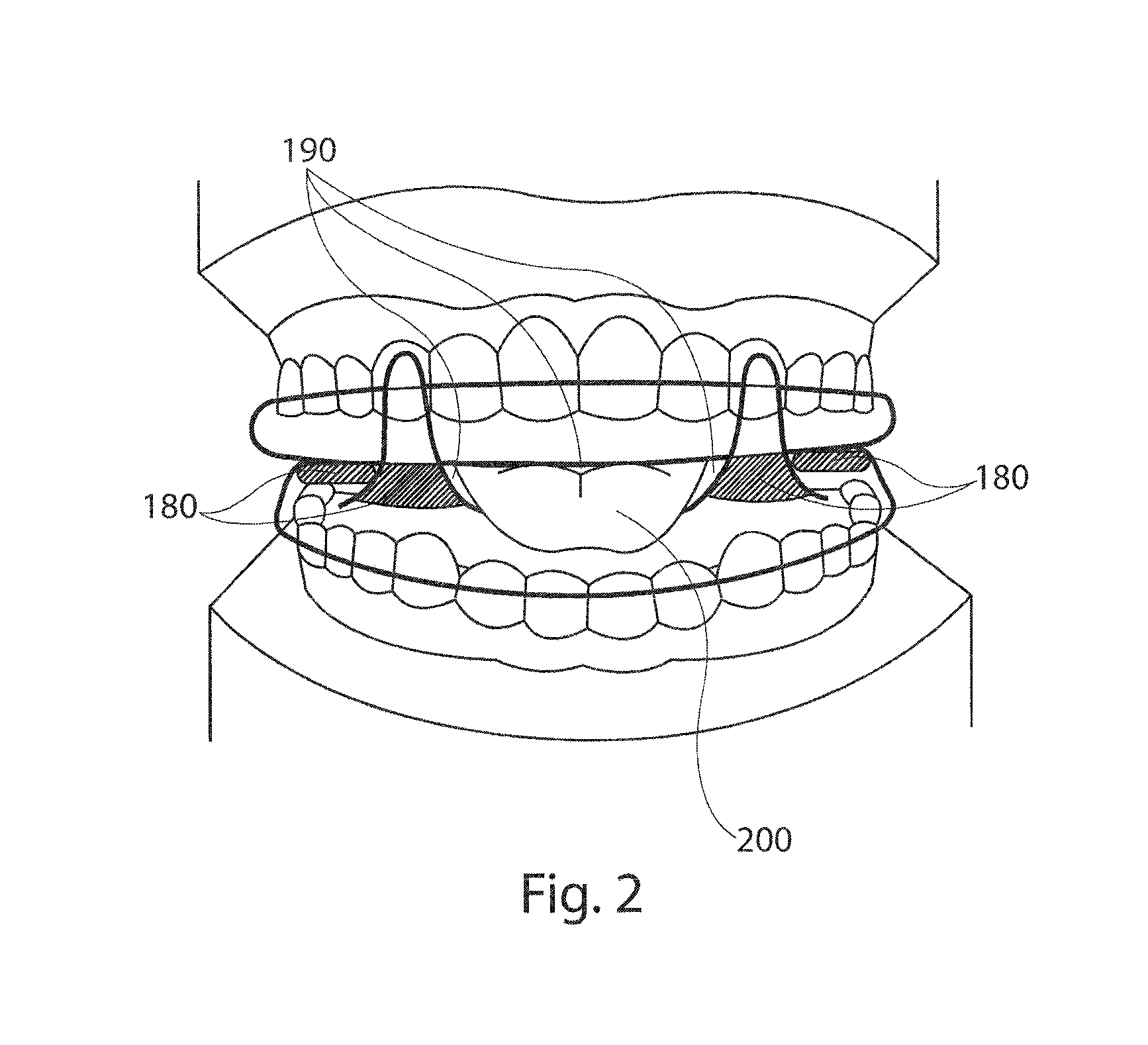Mandibular advancement device
a mandibular and pharyngeal technology, applied in the field of mandibular advancement devices, can solve the problems of reducing the likelihood of the tongue and pharyngeal tissues from restricting the airway, cumbersome and awkward for patients to wear, dental/muscle/tmj pain, etc., and achieve the effect of opening the airway
- Summary
- Abstract
- Description
- Claims
- Application Information
AI Technical Summary
Benefits of technology
Problems solved by technology
Method used
Image
Examples
Embodiment Construction
[0031]In the following description, reference is made to the accompanying drawings, which form a part hereof, and in which is shown, by way of illustration, various embodiments of the present disclosure. It is understood that other embodiments may be utilized and changes may be made without departing from the scope of the present disclosure.
[0032]In a normal bite position, the mandibular teeth are generally located slightly posterior to the corresponding maxillary teeth. In particular, the mandibular central incisors are normally located slightly posterior to the maxillary central incisors. For mandibular advancement, it is generally desirable to advance the mandible, i.e. protrude / extend the mandible outward, preferably 50-70% of maximum mandibular protrusion. The mandibular incisors would then be advanced anterior to the maxillary incisors.
[0033]FIG. 1 schematically illustrates a primary example of a mandibular advancement device provided by the present disclosure. The device 100 ...
PUM
 Login to View More
Login to View More Abstract
Description
Claims
Application Information
 Login to View More
Login to View More - R&D
- Intellectual Property
- Life Sciences
- Materials
- Tech Scout
- Unparalleled Data Quality
- Higher Quality Content
- 60% Fewer Hallucinations
Browse by: Latest US Patents, China's latest patents, Technical Efficacy Thesaurus, Application Domain, Technology Topic, Popular Technical Reports.
© 2025 PatSnap. All rights reserved.Legal|Privacy policy|Modern Slavery Act Transparency Statement|Sitemap|About US| Contact US: help@patsnap.com



